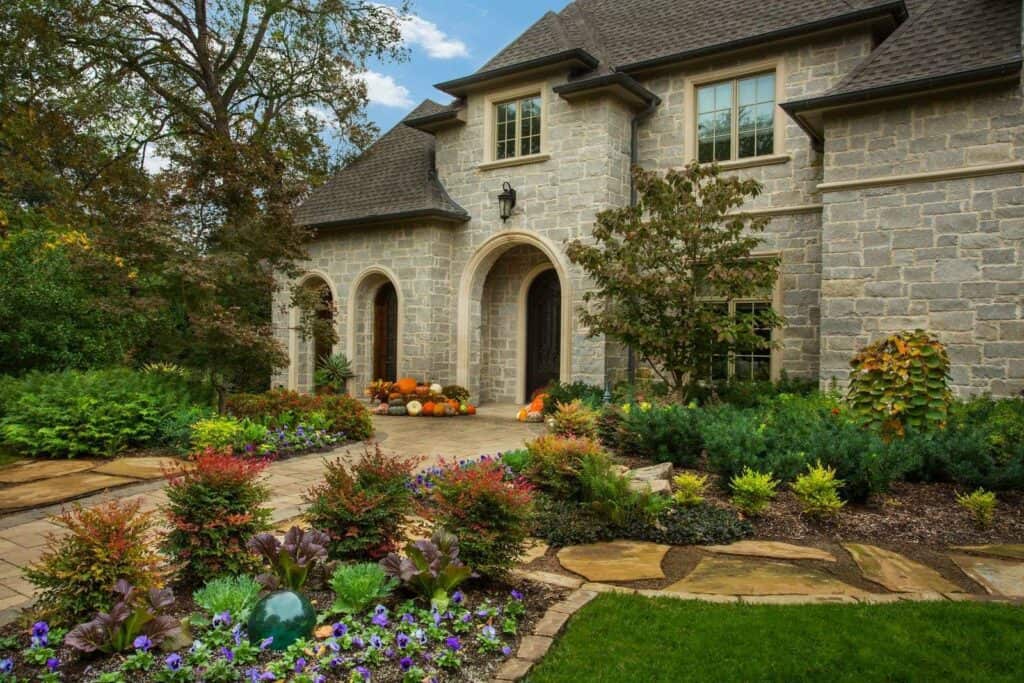Landscape Design for Beginners
Wiki Article
Landscape Design Things To Know Before You Get This
Table of ContentsThe Ultimate Guide To Landscape DesignThe Ultimate Guide To Landscape DesignAbout Landscape DesignSome Ideas on Landscape Design You Need To Know
When creating a household landscape, one of the most crucial step is to put an intend on paper. Establishing a master plan will conserve you time and cash and is most likely to lead to a successful design. A plan of attack is established via the 'design process': a step-by-step technique that takes into consideration the environmental conditions, your needs, and the elements and concepts of style.The five steps of the style process consist of: 1) conducting a website stock and evaluation, 2) identifying your demands, 3) creating practical diagrams, 4) establishing theoretical design strategies, and 5) drawing a final layout strategy. The very first three steps establish the visual, functional, and gardening needs for the design. The last 2 actions then apply those requirements to the production of the final landscape plan.
This is an essential action for both plant selection and placement and finding family members activities and functions. It is very important since the same environment conditions that affect the plantstemperature, humidity, rain, wind, and sunlightalso affect you, the individual. The following action is to make a checklist of your demands and desiresthis assists you figure out just how your yard and landscape will be made use of.
The practical representation is after that made use of to situate the task spaces on the site and from this diagram a conceptual strategy is developed. The last step is a last layout that consists of all the hardscape and growing information that are necessary for installment. Throughout the design process there are ten crucial things to think about: for plant choice and task area by considering what you desire and need to aid establish shapes and organize rooms by marking activity areas and linking with aspects for both the environment and the individual by making use of massing and layering techniques such as change areas and focal factors in the materials, the shades, and the surface appearances for the growth and maintenance of plants by utilizing lasting design techniques A complete stock and analysis of the site is necessary to identify the environmental problems for plant development and the very best use of the site.
The Best Guide To Landscape Design
The sort of dirt determines the nutrients and dampness offered to the plants. It is always best to use plants that will certainly thrive in the existing soil. Soil can be modified, change is frequently costly and the majority of times inadequate. Existing vegetation can provide clues to the dirt kind. Where plants grow well, note the soil problems and make use of plants with similar expanding you can check here requirements.
Sun/shade patterns, the amount and length of exposure to sunlight or color (Figure 1), develop microclimates (sometimes called microhabitats) - Landscape Design. Recording website conditions and existing plant life on a base map will expose the area of microclimates in the yard. Plants usually fall under one or 2 of four microclimate categories-full sun, partial shade, shade, and deep shade
Getting My Landscape Design To Work
Number 1. Sunlight and color patterns. Credit: Gail Hansen, UF/IFAS It is important to keep in mind all the status quo on an exact base map when doing the website stock (Number 2). Utilities such as power lines, septic systems, below ground utilities and roof overhangs establish plant place. Make use of a property surveyor's plat of your residential property for the boundaries and location of your home.


Identify the time and cash you are willing to place into keeping the plants and hardscape-be realistic regarding your purposes and capability. Proposed use areas. Credit: Gail Hansen, UF/IFAS There are numerous different landscape style styles- from straightforward to complex, yet it is handy to select one to direct your plant and product choice.
Lots of individuals discover it handy to search in gardening publications and books for concepts. This is a good begin, however be aware that the gardens in the images were selected because they are link superior examples. Consider the pictures with a vital eye to collect concepts that you can adjust to your passion level, your spending plan and your site.
Choose if you intend to open your yard, close your backyard, or a little of both, to these sights (Landscape Design). In various other words, do you desire the garden to confine the internet space around you and connect primarily to your house, or do you want the garden to open sights and look external, connecting to the environments? This will offer you a beginning point to think of a motif
The 9-Minute Rule for Landscape Design
Every yard should have a form theme, yet not all gardens have a design motif. Several household gardens have no particular design except to blend with the residence by duplicating information from the design such as materials, shade, and form.
In a form theme the organization and shape of the rooms in the yard is based either on the shape of your house, the form of the areas in between your home and the residential property borders, or a preferred form of the home owner. The form motif figures out the shape and organization (the layout) of the areas and the links in between them.

Report this wiki page